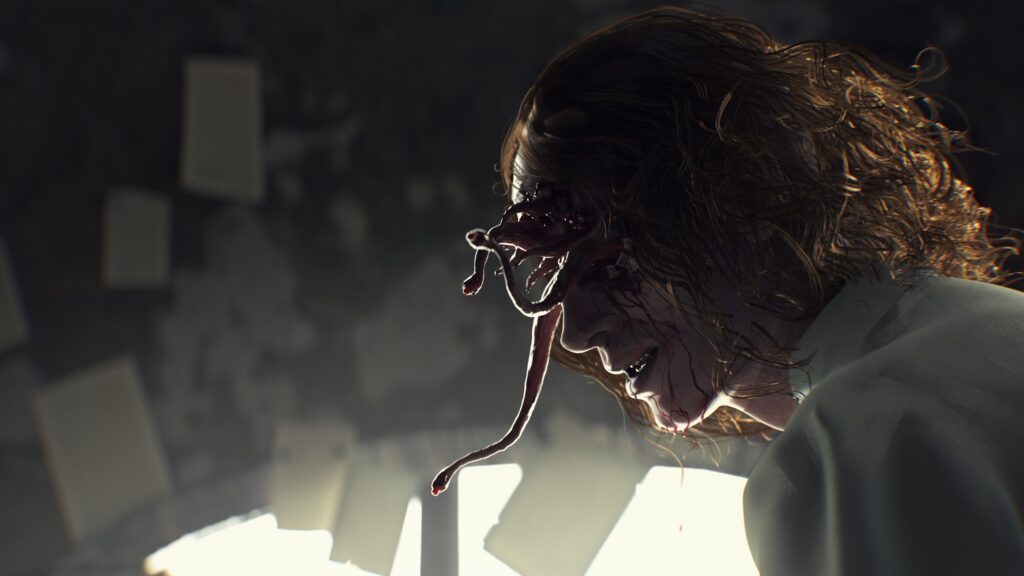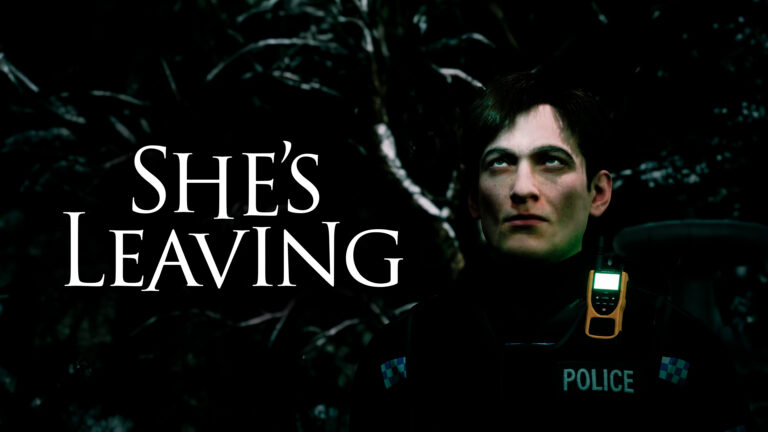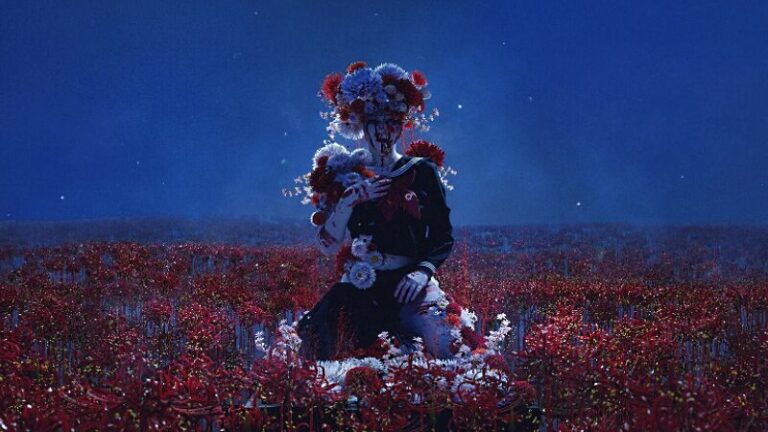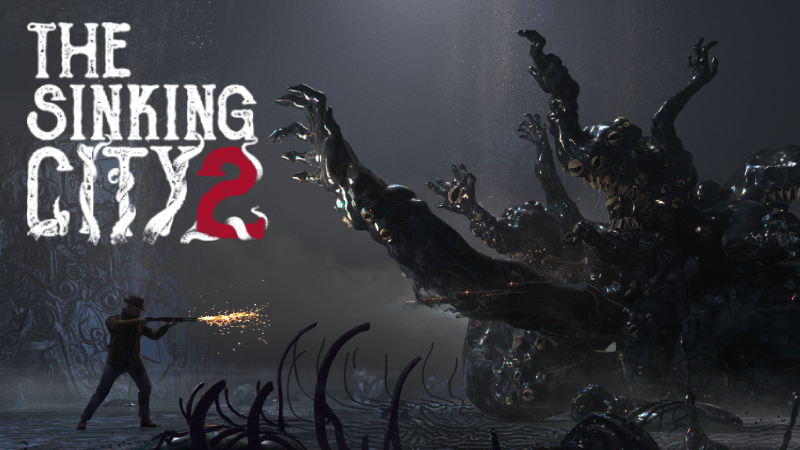 The Sinking City is a game rich in lore as well as design. When it first released in 2019, Ukrainian developer Frogwares gave players a unique combination of third-person horror, mixed with a semi-open world environment, couched in the cosmic lore and the works of H.P. Lovecraft. It was a layered, compelling game, and one that did justice to its literary source material.
The Sinking City is a game rich in lore as well as design. When it first released in 2019, Ukrainian developer Frogwares gave players a unique combination of third-person horror, mixed with a semi-open world environment, couched in the cosmic lore and the works of H.P. Lovecraft. It was a layered, compelling game, and one that did justice to its literary source material.
Evgeny Maloshenkov was part of Frogwares during the development of The Sinking City 1 as a concept artist. He did all the monster designs, some characters, and a few environments. He then left and later rejoined Frogwares during the development of The Sinking City 2 as a Senior Artist, with his main focus being on enemy and monster design.
We spoke with Evgeny to discuss his work on the original game, as well as what he and the team at Frogwares have in store for players with the sequel.
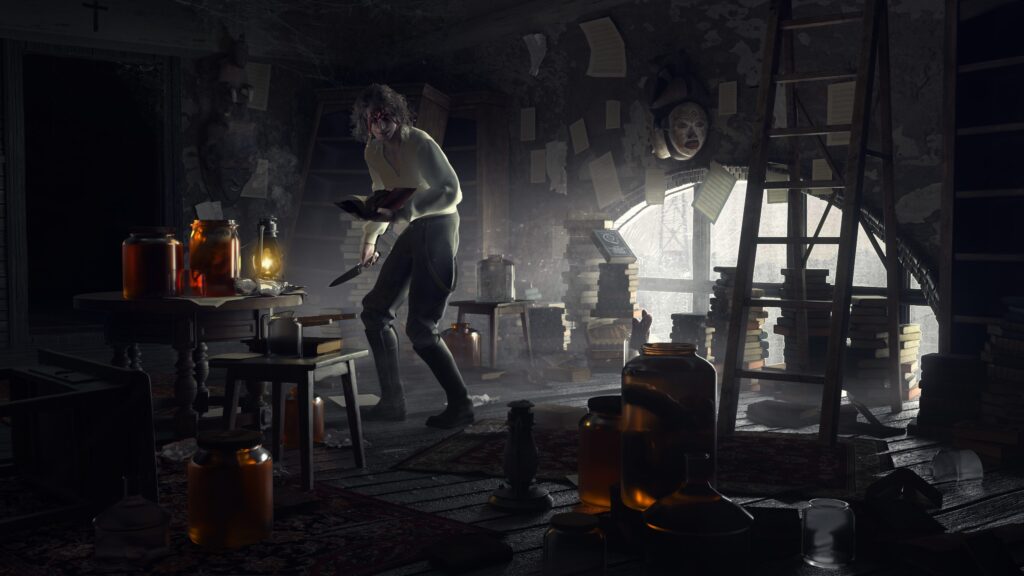 Rely on Horror: Thank you for agreeing to do this interview, Evgeny. We truly appreciate it! The first Sinking City is one of my favorite horror games from the past decade. Could you please tell us a little about yourself?
Rely on Horror: Thank you for agreeing to do this interview, Evgeny. We truly appreciate it! The first Sinking City is one of my favorite horror games from the past decade. Could you please tell us a little about yourself?
Evgeny Maloshenkov: Hi there. My name is Evgeny Maloshenkov, and I work as a Senior Concept Artist at Frogwares. My main focus has always been on the enemies or monsters we created for The Sinking City franchise. Almost every foul creature you encountered around the streets of Oakmont and any you’ll cross paths with in Arkham in the sequel are essentially my “babies.”
ROH: How did you get into video games?
Evgeny Maloshenkov: I always loved video games as a kid, but also had a strong passion for sculpting and drawing. During my teenage years, I began to realize I could try to mix those two hobbies together and even get paid for it. I began learning various software programs and just kept honing my skills. The game development scene in Ukraine was rapidly growing, which eventually gave me the opportunity to be hired as a junior artist. That’s where my journey started.
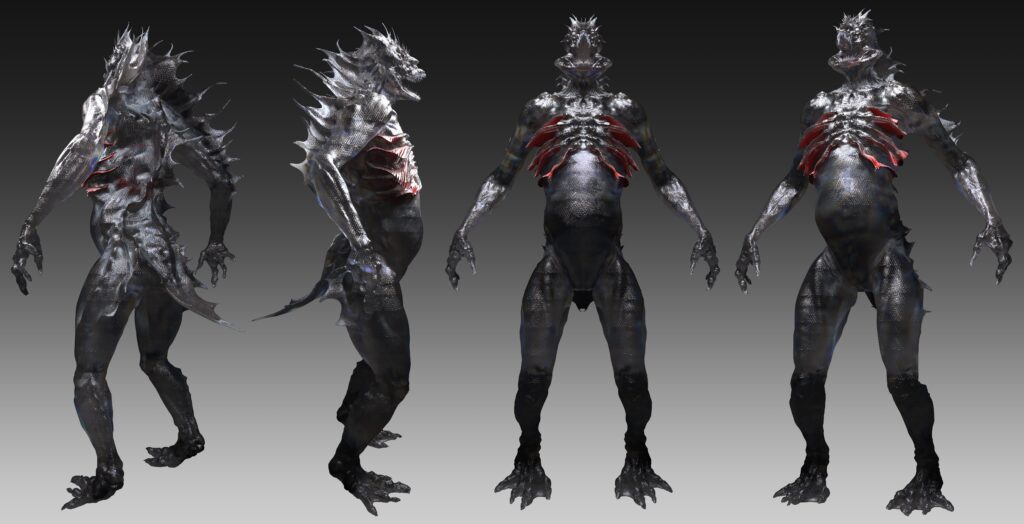 ROH: Can you walk us through your process when designing a new enemy, from concept to final asset?
ROH: Can you walk us through your process when designing a new enemy, from concept to final asset?
Evgeny Maloshenkov: Honestly, I know some artists might think it’s overkill, but I actually prefer designing enemies directly in 3D from the very beginning. There’s just something about jumping into 3D that helps me understand the creature’s form and feel right away. Sometimes I do this from scratch, while other times I’ll take it from concept basic arts/drawings made by others on the team.
I usually start with a rough sculpt in 3DCoat, just to get the basic shape and silhouette down. Then I render it with some simple procedural textures and solid lighting to give it a more polished, presentable look. I’ll often do a few touch-ups in Photoshop to help sell the idea visually.
Once I’m happy with that initial concept, I show it to someone on the animation team to get their technical feedback. If given the all-clear that there is nothing that will be a major blocker or pain to animate, I’ll do a quick auto-retopo (a 3D modeling technique that automatically rebuilds a mesh’s topology) of the mesh and hand it off to the animator. While they start working on early animations, a 3D artist takes the high-poly version and begins refining it, e.g, doing a proper, clean retopology, UVs, and textures.
By the time the final mesh is ready, the animator already has some of the movement blocked out using the rough version. They can then just swap in the final model. It’s a highly collaborative process where animators can frequently identify problem areas or potential improvements that can help guide me and the other 3D artists early on. I’ve found that for creatures, where iteration is plenty, having these checks and comments already done can help better guide us when taking on feedback from the rest of the team later on.
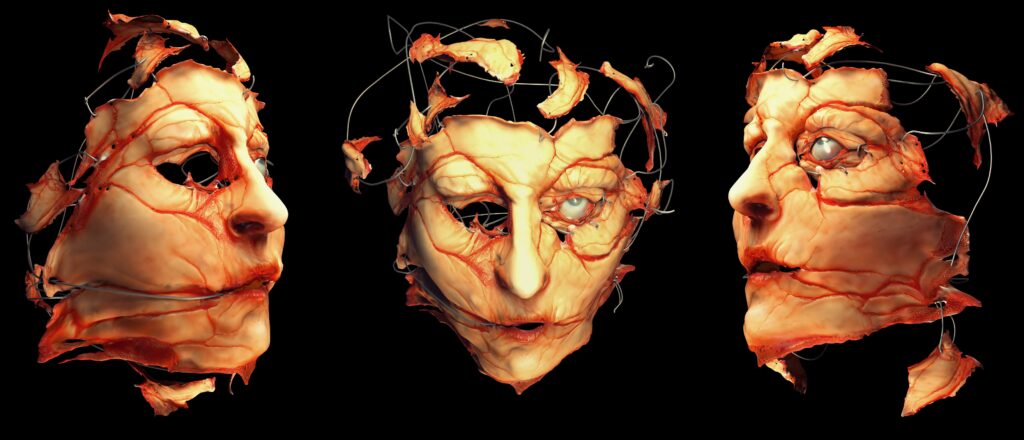 ROH: How has your approach to monster design evolved from The Sinking City to The Sinking City 2?
ROH: How has your approach to monster design evolved from The Sinking City to The Sinking City 2?
Evgeny Maloshenkov: Oh, wow. Well, the time gap between those two games is like 6+ years, so I’ve gained a lot of professional and life experience in between. But overall, I feel the monsters we’re designing in The Sinking City 2 are of a much higher quality, and that’s because they really need to be. We’re steering the sequel more into the survival horror genre, so combat is now a key pillar in our entire game design. A big part of that comes down to enemy design.
To start, our technical budget now allows for monsters to have many more polygons, which gives me plenty of room to add more detail directly to the mesh, rather than bake it into the normal map. This helps the final 3D model look more premium. We are also paying much more attention to the VFX and texturing, so I dug into Unreal’s material workflow to create references for the team.
VFX overall is probably one of the major parts of the design, and we can do very cool things here. For example, one of our enemies has worms constantly burrowing in and out of its skin. Very unsettling.
I’d say it’s not just my approach that has evolved but the whole studio’s. With enemy design now a key priority, we have given ourselves the space and time to really dig deep into creating creatures that stand out from each other. In the end, good, punchy weapon handling and feel are just one side of the coin. We need to give you something really gross and upsetting, and you also want to regularly blast with a shotgun.
ROH: What specific influences – literary, artistic, or personal – have shaped the horror aesthetic in TSC2?
Evgeny Maloshenkov: So, of course, H. P. Lovecraft has the most significant influence on the overall direction of the game. What is a bit of a creative godsend here is that while many of the iconic characters in his writings are described very vividly, there are others that have mere mentions of or hints as to how they look. So, we have this middle ground where certain creatures or traits are a given and we all know where to start, while others are open to interpretation, and we can get a lot more creative. We’re not pressured to create everything from scratch in our minds, but we’re also not stuck in a creative rut, churning out designs we have no creative input on.
Outside of that, I like finding inspiration in the natural world, especially in animals. There is something deeply unsettling about how certain creatures move or behave, and that often sparks ideas for new designs. When it comes to adding our own touch or spin to our monsters, I prefer working through abstraction and letting my imagination take the lead vs taking directly from other sources so that we end up with something that feels created “by us.”
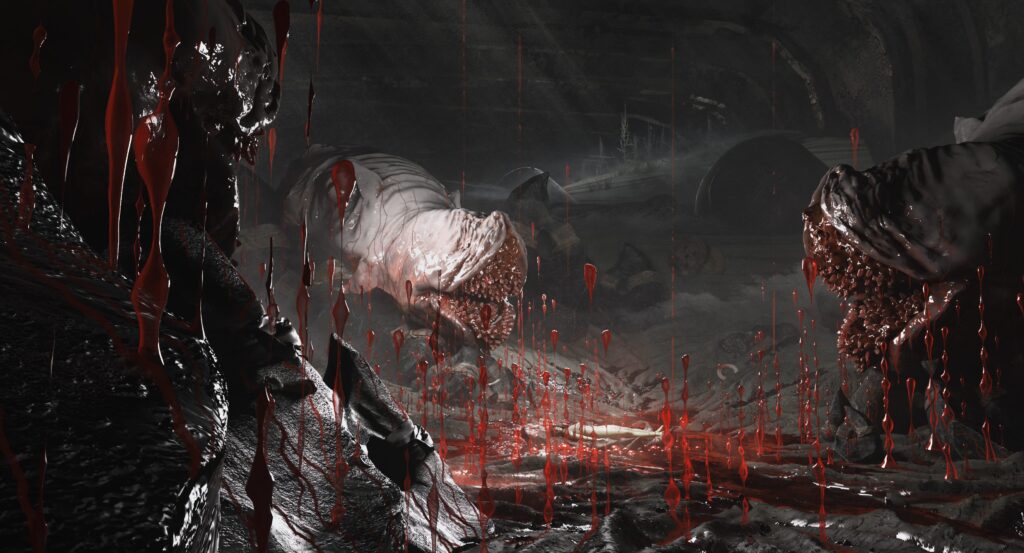 ROH: Is there a particular creature in The Sinking City 2 that you’re most proud of? What was the inspiration behind it?
ROH: Is there a particular creature in The Sinking City 2 that you’re most proud of? What was the inspiration behind it?
Evgeny Maloshenkov: I don’t want to name it outright to avoid spoilers, but I like one of our big bosses that falls into the basket where we had more creative freedom. It is a strange and eerie combination of elements drawn from worms, insects, and cosmic horror. I enjoy creating things that make people feel uneasy without being able to explain exactly why, and the Slither Boss captures that feeling well, in my opinion. I’m looking forward to seeing people play it on stream and hopefully going “Ok…eww. What even is that?!”
ROH: As a Senior Concept Artist, how do you balance your original creative impulses with leading a broader visual team?
Evgeny Maloshenkov: Finding the balance between personal creativity and team leadership can be challenging, but it becomes much easier when you know everyone has a shared understanding of the overall vision or intention we all want to create for the player. That understanding builds a lot of trust among the art team, and then it’s a matter of letting everyone do their work, creating more freely. We can collaboratively provide feedback and iterate without any egos or massive disagreements because we are all looking at the same end goal, the agreed-upon vision.
Another important aspect, in my opinion, lies in the pipeline that I described earlier. When a 3D character artist works with a 3D concept and not a 2D picture they need to worry less about matching the 2D concept, and can focus more on the technical parts and creating the same character that we all saw in the early stages and said “Yes, this matches what we want to create.” It may sound weird to some, but A LOT can change or get lost in translation when you take a 2D image and hand it over to someone else to create in 3D.
ROH: Can you discuss how the war in Ukraine impacts you and the challenges you face while developing the game in such a volatile climate?
Evgeny Maloshenkov: It has impacted my personal life, but I try to separate work and personal life as much as possible. Work essentially becomes a refuge. This is something I’ve heard from a lot of people on the team. When you can focus on something more creative that pulls you in, you’re able to disconnect from the harsh reality going on around you, even if just for certain parts of the day. It’s not about ignoring it; rather, it’s about giving your mind a place and time to disconnect from it.
However, for everyone on the team—whether they are in Ukraine or abroad— it’s still a major part of our lives. Drone and missile strikes occur regularly in cities across Ukraine. When we hear news about friends or family who are serving, a strong sense of dread often follows. While we want to know they are safe, there is always the possibility that the news we receive could be the worst-case scenario. That can be very taxing on both the mind and soul.
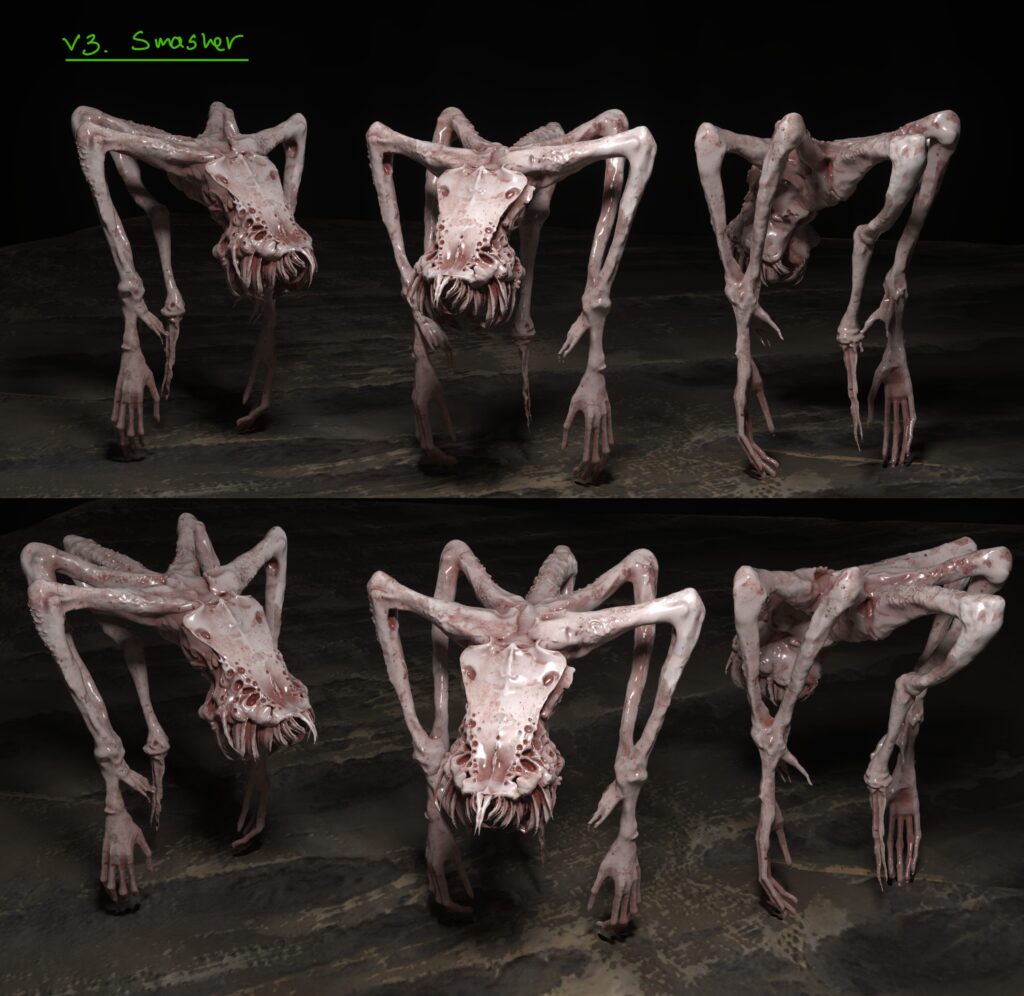 ROH: What motivated your return to Frogwares and The Sinking City universe specifically?
ROH: What motivated your return to Frogwares and The Sinking City universe specifically?
Evgeny Maloshenkov: While talking with friends who still worked at Frogwares, I started to sniff out that they were cooking a sequel and felt I had to jump at the chance to come back. I am a sucker for the setting basically. To me, there is something really special about the roaring 1920s boom-era United States, turned on its head and enveloped by cosmic horror. I like playing and working on horror games that are rooted in a realistic world. You have this cool, genuine anchor point that we can relate to or understand right away, while then seeing how said world has been mutated or altered now with the horror thrown into the mix.
ROH: How has the studio culture or creative direction changed between the first and second games?
Evgeny Maloshenkov: It has changed a lot. For starters, during The Sinking City development, which was from around 2016-ish to 2019, we all went to the office. Now, with the war having people spread across the country and some in other countries, we are all mostly working remotely. It’s not a bad thing, but it’s different. Personally, I feel I’m more productive this way. It allows me to become more self-sufficient and responsible for my own work. It has also improved my communication skills because I now actively make an effort to stay in touch with my team members. Before, it just kind of happened when when we were physically together in the same space.
ROH: How do you use visual design to tell a story or evoke fear without relying on dialogue or lore dumps?
Evgeny Maloshenkov: That is a very broad topic, but at a really fundamental level, or basically what I call “the frame” of the monster, I often start with the knowledge that specific shapes subconsciously evoke specific feelings when people look at them, both negative and positive. For example, rounded shapes are often associated with positive feelings – they’re complete, whole, and smooth. On the opposite side, you have sharp, angular shapes, usually associated with anger and threatening objects. But real life doesn’t follow this rule in black and white. If you just employ this thinking throughout, everything starts to look obvious and almost too gamey in a way, at least for our needs.
What I try to do is blend the two rules to form that basic frame or shape that the creature will always impose. So if we want something slimy or blobby looking, we’re of course going to have a lot of smooth-looking shapes, a lot of circles, etc. Therefore, I now need to look at what sharp, angular accents I can add. And vice versa, if something looks too hard and angular throughout, I will go in and start smoothing things out here and there to give it a better sense of reality. Once that basic frame is locked in, the details essentially have a path they will follow, but it’s here that I can start to move away from this rule and start creating the final look as I want it. The logic is, the basic frame gives the player that immediate sort of subconscious gut reaction when they see it, while the details are left to push home whatever emotions we want to emphasize.
ROH: How much does player psychology factor into your creature design? Do you try to tap into specific fears?
Evgeny Maloshenkov: Yes, of course, but to be honest, it’s not something we set out to do in some structured or malicious way. We don’t sit down and say “Alright, this next creature needs to scare the crap out of people with arachnophobia. Go!” Everyone on the team is different, and we are often our own biggest critics or litmus tests. So we constantly analyze and express our feelings when working and looking at monster designs. And if some specific shape or look is evoking that ‘something uncomfortable’ in many of us, then we feel it will most likely evoke the same feelings in many players, so then we know we’re on the right track, and we hone in on that.
ROH: If you could step into one of your creature designs and walk around the city, which one would it be and why?
Evgeny Maloshenkov: We are working on this monster that is a huge blob of black liquid; it can take any shape or form, and it’s impossible to kill. But due to size, it would end up being more like a Godzilla-style walk through the city. I’d wreck everything in my path vs taking in the sights.
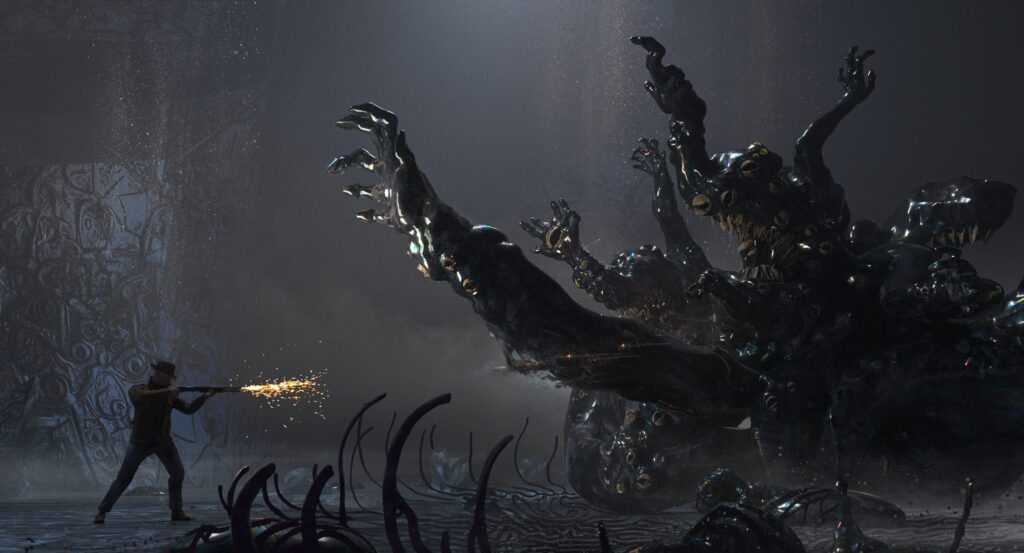 ROH: What’s one detail in your artwork for TSC2 that you hope players notice, even if it’s very subtle?
ROH: What’s one detail in your artwork for TSC2 that you hope players notice, even if it’s very subtle?
Evgeny Maloshenkov: Hmm. It’s hard to pick just one detail. I like working from big to small in an effort to make the most visible/important parts of the design become a clear focal point. But if I were being forced to pick ONE overall detail, then I would personally hope it’s that people feel each creature feels like it actually belongs in a H.P. Lovecraft-inspired world. There is a specific visual feel that Lovecraft’s creatures invoke, so you can’t just slap any old monster in there and call it a day.
ROH: Thank you for taking the time to speak with us! We wish you the best of luck as you continue developing The Sinking City 2 and can’t wait to play it!
Evgeny Maloshenkov: Thanks for having me! Best regards.
We sincerely appreciate Evgeny Maloshenkov for granting us the chance to interview him, along with developer Frogwares, and Paul Milewski, who played a key role in coordinating everything.
The Sinking City 2 is set to release on PC, PS5, and Xbox, and is now available to wishlist.
Be sure to check out the latest Developer Deep Dive below.

